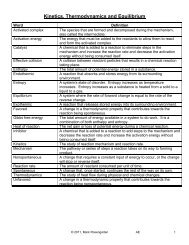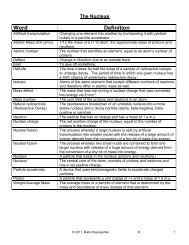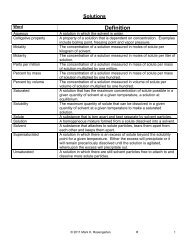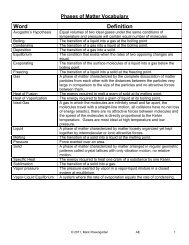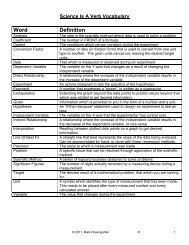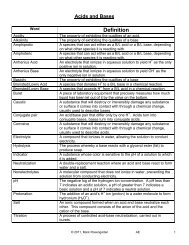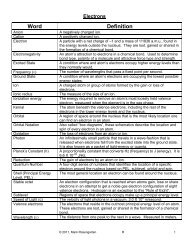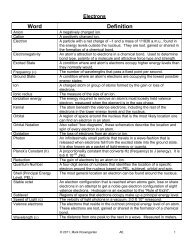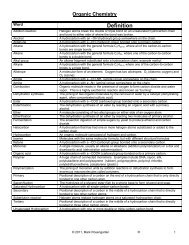Unit 11 - Mark Rosengarten
Unit 11 - Mark Rosengarten
Unit 11 - Mark Rosengarten
Create successful ePaper yourself
Turn your PDF publications into a flip-book with our unique Google optimized e-Paper software.
3) pH (HW: p. 18)<br />
Essential Question: So what is this pH that we use to keep our fish alive and our bodies stink-free?<br />
pH, Power of Hydronium Ion In A Solution<br />
Ah, pH. It’s the easiest method to use for comparing the strengths of acids and bases. We test our fishtanks (fish pee<br />
out ammonia, which is a base, and brings the pH up), our lawns (acid rain brings the pH of the soil down) and even<br />
food is pH tested as it is being made to make sure that it falls within the right range. You wouldn’t want your supersour<br />
candy to have too little bite, would you? So just what is this pH, what does it mean, and how is it measured?<br />
Water breaks up very slightly to form hydrogen ions and hydroxide ions:<br />
H 2 O H +1 + OH -1<br />
In neutral water, the concentration of H+ = 1.0 X 10 -7 M, so the pH = 7<br />
ADDING ACIDS TO WATER- adding an acid to water increases the H 3 O + concentration, so that the pH increases by<br />
1 as the acid strength increases tenfold.<br />
When the concentration of H + = 10 -1 M, the pH = 1<br />
When the concentration of H + = 10 -2 , the pH = 2<br />
When the concentration of H + = 10 -3 , the pH = 3<br />
When the concentration of H + = 10 -4 , the pH = 4<br />
A solution with a pH of 3 is 10 times more acidic than a solution with a pH of 4.<br />
A solution with a pH of 3 is 100 times more acidic than a solution with a pH of 5.<br />
A solution with a pH of 3 is a 1000 times more acidic than a solution with a pH of 6.<br />
© 20<strong>11</strong>, <strong>Mark</strong> <strong>Rosengarten</strong> R 10



